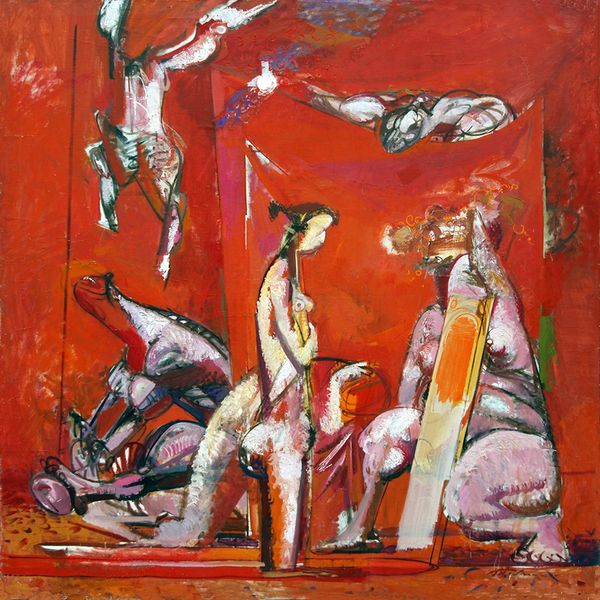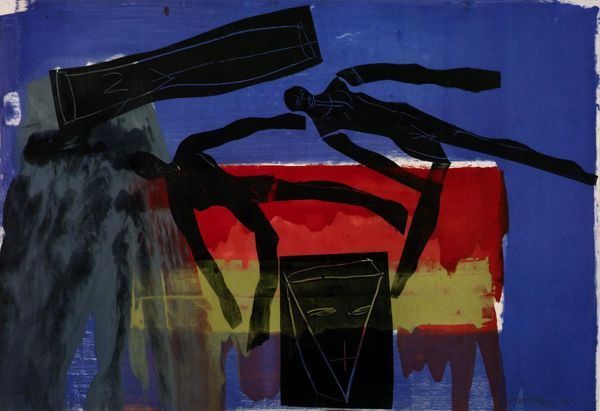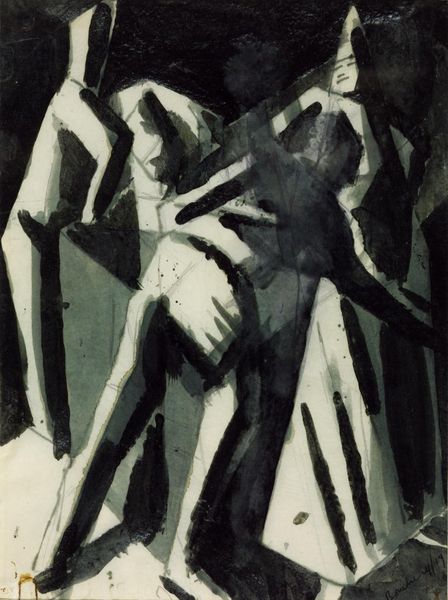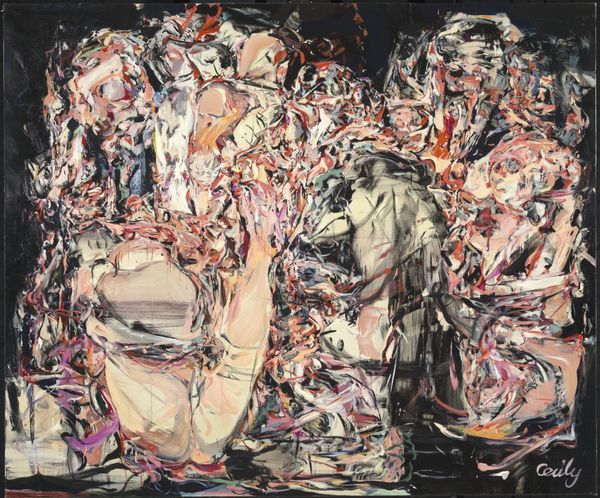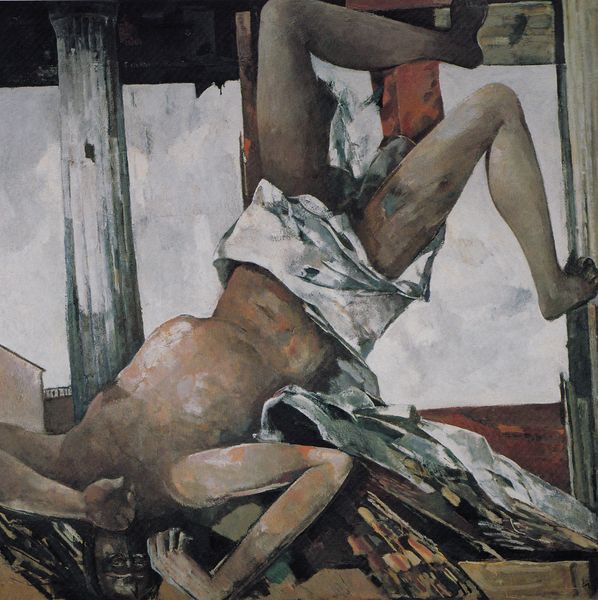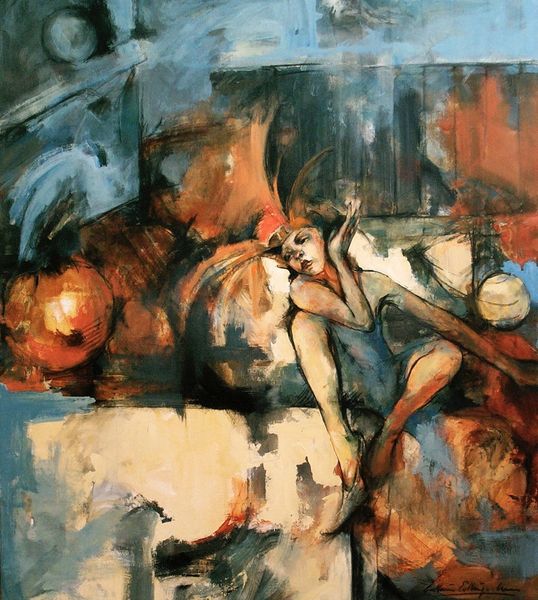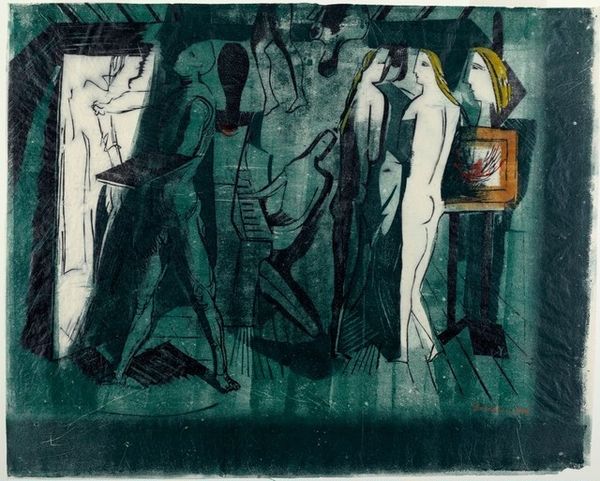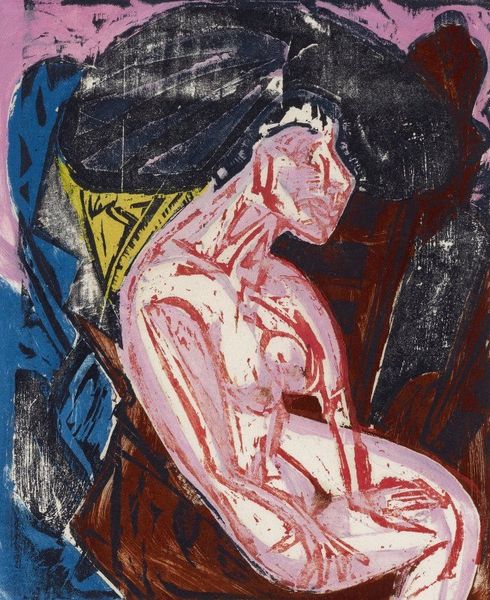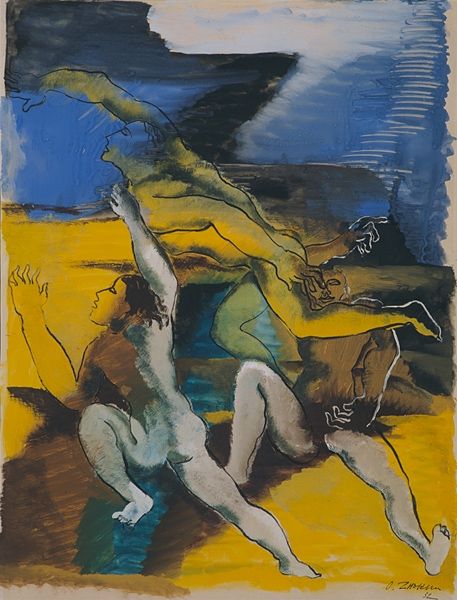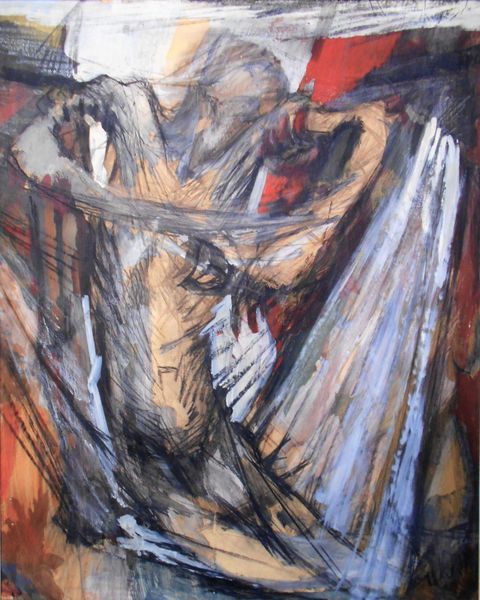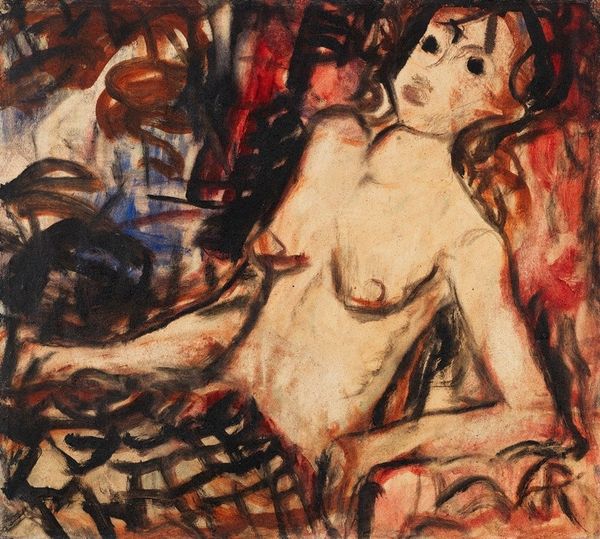
drawing, painting, oil-paint
#
drawing
#
abstract expressionism
#
narrative-art
#
painting
#
oil-paint
#
landscape
#
figuration
#
oil painting
#
neo expressionist
#
neo-expressionism
#
abstraction
#
genre-painting
Copyright: Vasiliy Ryabchenko,Fair Use
Curator: Vasiliy Ryabchenko's 1989 oil on canvas, "Susanna and the Elders," immediately strikes the eye with its tumultuous energy. What's your first impression? Editor: The immediate impression is one of stark, unsettling tension. The palette is dominated by harsh blacks and reds, setting a foreboding mood that vibrates through the composition. The figures seem trapped in this compact space, fighting against both the frame and each other. Curator: Ryabchenko, deeply immersed in the neo-expressionist wave, doesn't just represent the biblical story; he seems to wrestle with its very essence. You can practically feel the urgency of the artist’s hand. Notice the rapid, almost violent brushstrokes—how do they contribute to the painting's narrative power? Editor: Exactly, it's fascinating how Ryabchenko deploys oil paint not to create illusionistic depth, but to draw attention to the sheer physicality of the act of painting itself. The crude lines, smeared colors, and unfinished textures all work to expose the painting as a material object and emphasize his labor. This aligns the work more closely with immediate human experience. The elders appear as rough hewn by an almost furious carving. Curator: Absolutely, and let's consider the positioning of the subjects. Susanna, though centered, isn't a figure of power here. She seems more vulnerable. The crude forms give a rough impression of her forced handling in a way the medium underscores. Editor: Agreed. The work undermines the historical contexts surrounding its creation. Is it a challenge of orthodox representations? Perhaps there are threads concerning social and political reforms from the Soviet era represented within Susanna's strained posture. The artmaking is raw and immediate. Curator: I hadn’t considered how closely those issues of repression map onto a religious scene such as this one. But thinking of artistic production against shifting economic conditions makes me reconsider the figures depicted as representative of various positions or powers in that climate. Editor: Precisely. And for me, this work, with its visceral handling and symbolic weight, demands that we confront the relationship between the art object and the circumstances surrounding its making. It's an uncomfortable conversation, but it's also deeply rewarding. Curator: Well, that provides such a helpful lens through which to reconsider those familiar artistic movements. I know I'll be approaching this piece differently moving forward!
Comments
No comments
Be the first to comment and join the conversation on the ultimate creative platform.
